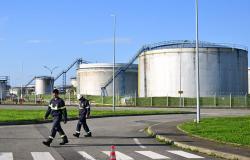Investors ramped up trading in oil futures and options to record levels in October to hedge against growing uncertainties related to the raging war in the Middle East and the bearish outlook for supply and demand for 2025, which lead to strong fluctuations in crude prices.
Hedging can help producers reduce risk and protect their production against wild market fluctuations by locking in a price for oil. It can also allow traders to make profits during periods of volatility.
According to data from the Intercontinental Exchange (ICE), some 68.44 million barrels of oil futures and options were traded in October, surpassing the monthly record set in March 2020, when oil futures Brent had fallen by around $30 per barrel following the collapse in global oil demand caused by the Influenza A (COVID-19) pandemic.
CME Group, meanwhile, saw a single-day volume record for weekly crude oil options on October 18, with 58,132 contracts traded.
Aegis Hedging, which has a customer base whose production profile represents approximately 25-30% of the total barrels of oil equivalent in the United States, recorded the highest number of transactions in its history in October, exceeding about 15% the previous monthly record.
“Bullish surprises such as possible attacks on oil infrastructure are the kinds of events that drive client activity and cause some nervousness in the market,” said Jay Stevens, director of market analysis and fundamentals at Aegis Hedging.
Investors spent most of October awaiting Israel's response to an Iranian missile attack on October 1, fearing that retaliation could involve strikes on the country's oil infrastructure. Israeli strikes a few weeks later bypassed Iranian oil installations and did not disrupt energy supplies.
Analysts said oil's geopolitical risk premium was reduced, with Brent oil futures falling by around $4 a barrel the following day.
Brent traded in a wide range in October, with lows and highs hovering between $70 and $81 per barrel. Over the past quarter, Brent crude futures fell 17%, while West Texas Intermediate crude oil futures fell 16%, according to LSEG data.
“When futures prices become highly volatile due to geopolitical and other uncertainties, the market often turns to options to manage risk more effectively,” said Jeff Barbuto, global head of oil markets at ICE.
Investors traded more than 8.38 million barrels of Brent options in October on ICE, surpassing the April 2024 record of 6.02 million barrels.
THE BALANCE OF DEMAND AT LOWER
If geopolitical conflicts pose an upward risk to prices, operators are also faced with weak fundamentals for 2025.
West Texas Intermediate could average $65 per barrel next year, with a decline of less than $50 per barrel if the Organization of the Petroleum Exporting Countries and its allies (OPEC+) increase production next year , said Matt Portillo, an analyst at Tudor, Pickering, Holt & Co, in a note from last month.
“The market is looking at the balance between generally sluggish supply and demand,” said Peter Keavey, global head of energy at CME Group. “Investors are really looking to the options markets for hedging,” he said, citing the sharp 38% year-over-year rise in average daily volumes of monthly WTI crude oil options traded on the CME last month.
U.S. shale producer Coterra Energy, which has not hedged a significant portion of its production until the end of this year and next, said it added new derivative contracts in October in its trading report. third quarter results.
The company added an additional 305,000 barrels of WTI oil coverage for the fourth quarter of 2024, on top of the 3.68 million barrels it already held. It added 4.205 million barrels of WTI oil for the remainder of 2025.
Uncertainty over when OPEC+ will end its latest round of production cut measures, a cut of 2.2 million bpd, fueled producer concerns last month and contributed to stimulate hedging activity.
“The outlook has darkened for 2025, with oversupply predicted,” Aegis’ Mr Stevens said.
OPEC+ has finally agreed to delay its oil production increase planned for December by a month, the group said on Sunday, as weak demand, particularly from China, and increased supply in outside the group maintain downward pressure on the oil market.






